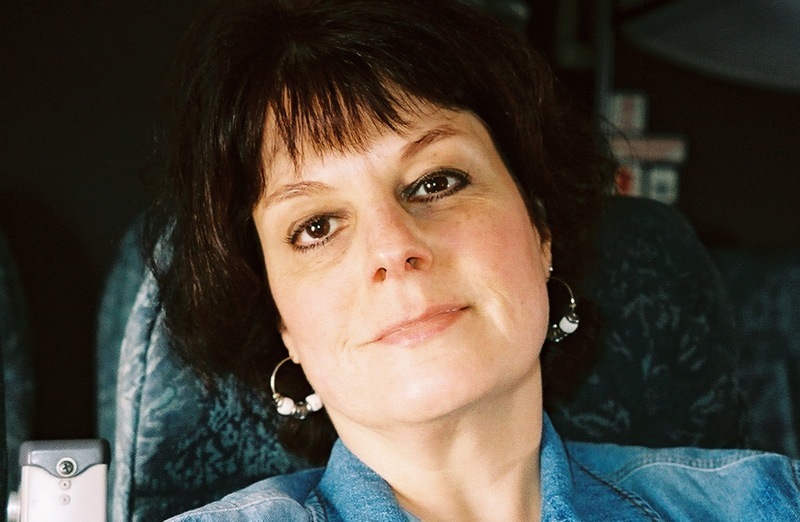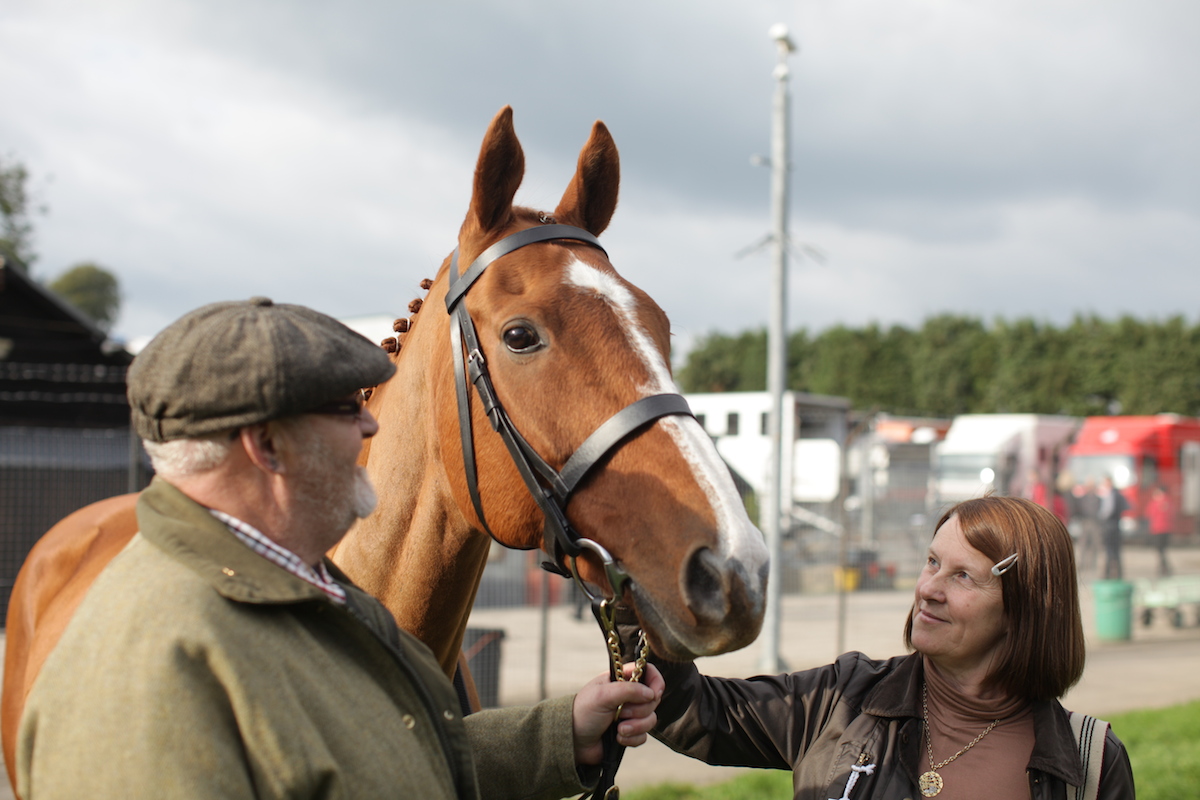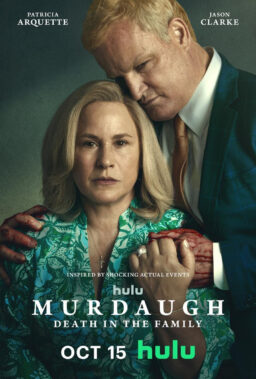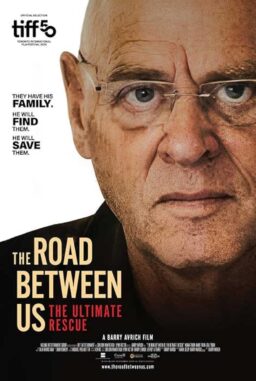Few animals are quite as camera-ready as a horse. In fact, one of the earliest known film clips captures one such animal at full gallop. It was shot in 1878 by photography pioneer Eadweard Muybridge, who used the footage to confirm his suspicions that horses lift all four hooves off the ground as they race.
The potent mix of the equine and the cinematic is demonstrated yet again in the new documentary “Dark Horse,” the 2015 winner of the Sundance Film Festival’s Audience Award that opens wider this weekend. Like many such tales, it is an inspirational true story full of underdog determination and unlikely success as it recounts how 23 regulars at a working man’s club in the economically depressed Welsh mining town of Cefin Fforest decided in the early 2000s to share the expense of breeding and training a racehorse. But unlike such features as 2003’s “Seabiscuit” and 2010’s “Secretariat,” the events behind the miraculous feats achieved by this stallion born of humble beginnings known as Dream Alliance are not as widely known.
As is often the case, the focus is as much on the colorful humans involved—especially barmaid and cleaning lady Jan Vokes, the group’s ringleader, and husband Brian, a former coal deliveryman and nightclub bouncer—as it is the steed. They were out to prove they could give the upper-crusty elite who monopolized “the sport of kings” a run for their money by raising a foal, named in honor of the syndicate of townspeople backing him, on the couple’s slagheap allotment.
What follows is saga of incredible highs and harrowing lows, including a terrible injury followed by an against-the-odds comeback attempt. But one element never waivers: The backers of Dream Alliance are not so much interested in whatever money is to be gained as they are in merrily upending the expectations of others while being devoted to the animal that fulfilled their dreams.
Besides Jan, the most important woman involved in “Dark Horse” is Louise Osmond, 48, a one-time TV news journalist who hails from Oxford and got her degree at the university. Her resume is full of well-regarded documentaries she directed or co-directed that tackle such varied topics as a peril-fraught solo yacht race around the world (2006’s “Deep Water”), a one-of-a-kind British fashion designer (2011’s “McQueen and I”) and a BAFTA-nominated investigation of how the remains of a 15th-century ruler were discovered under a parking lot (2013’s “Richard III: The King in the Car Park”).
When Osmond speaks about “Dark Horse,” her deep affection for the project and the residents of the small Welsh town is evident. She relates her delight in happening upon the story while looking for a racetrack-related subject in the film’s press notes thusly: “It was funny and moving, full of life and life-affirming with bit universal themes and a great dramatic sweep and shape to the story. It was also a wonderful mash of film genres, part-classic British ‘Billy Elliot’/’Full Monty’ underdog tale, part-‘Lavender Hill Mob’ Ealing comedy caper, plus of course ‘Rocky’ … with a horse.”
Warmed by the knowledge that her latest release has been blessed with glowing reviews so far—its ranking currently stands at a stellar 96% positive on Rotten Tomatoes—Osmond spoke about her experiences on “Dark Horse” with RogerEbert.com.
After we met at the Sony Pictures Classics dinner during the Toronto International Film Festival last year, I promised myself to see “Dark Horse” since I am a sucker for these kinds of stories. Like many British underdog fables, it literally took a village to not just produce this four-legged winner, but also to make your documentary come alive as well with lively anecdotes and dramatizations. Meeting these salt-of-the-earth Welsh townsfolk is as much as a treat as learning of Dream Alliance’s accomplishments.
The village was swept up in success before and it is happening again now that the documentary has been made and is coming out.
That this is a true-life fairy tale elevates the experience of watching it unfold.
I hope so. Someone suggested that the film should have been more cynical. But the area where Jan comes from has had some hard times with no employment. Spending time down there gave me context. It is a classic underdog tale rooted in the fact that Jan is still working seven days a week both at the school and the supermarket. Both Jan and Brian came to New York when we were promoting the film and it was fantastic. But on Monday afternoon, she was back cleaning the school. I wish things would have changed for her. That the queen would have said, “Join my training team.” But she is a self-possessed person in a very happy community.
I smiled a lot during “Dark Horse” but I cried just once—surprisingly, when trainer Johnson White gets emotional remembering Dream Alliance’s journey. You understand the syndicate members being that way but when someone who is involved all the time in the sport is that moved by such a horse, it really was touching. Also, I applaud your use of the song “Green, Green Grass of Home” by Welshman Tom Jones against such a verdant hilly backdrop.
That is the thing about this story as well. Forget about these places with their grand stables, grounds and houses. They don’t do it for the money. They do it for the animals. If one gets injured, they get devastated. All the stable hands. Johnson would get up early and his day would brighten if he saw that the horse was getting better. As for the song, I got some stick for that, about how you could not get much more literal. But I figured you can either be subtle or just embrace it.
As every journalist does these days, I checked out your Wikipedia entry before speaking to you. One sentence jumped out at me and made me laugh: “Since she is a British filmmaker, not very much is known regarding her personal life.” Are you really that secretive about your background?
I never read that. I never Google myself. I hope I remain that. My mother is American. She met my father in France during her junior year abroad and dropped out of getting a degree to marry him. They moved to the English countryside.
The entry also says you got a degree in modern history. Is that an oxymoron?
That is so British, so precise. It begins in some year between 1445 and 1485. Basically, it means not ancient. I joined the ITN (International News Network) trainee program, which was amazing. I did unbelievable things, like covering Mandela’s election in South Africa. In the end, I wanted to do long-form documentaries but the experience was invaluable. Judith Lawson, my producer on “Dark Horse,” was also a journalist and has unbelievable stories about Mrs. Thatcher while covering Parliament. It was great working together on “Dark Horse,” going into this small community. It can be a bit like a gorilla coming to tea. But she managed to operate in the nicest way possible. We formed friendships with Jan and Brian as well as Howard (Davies, a tax consultant and a member of the syndicate who previously had a share of a racehorse) and his wife, Angela.
Your previous documentaries also exposed you to new environments, too, such as 2007’s “The Beckoning Silence,” a TV doc about a mountain climber who returns to the scene of his failed attempt to climb Eiger in the Alps that won an International Emmy.
Just like “Dark Horse” just happens to be set in the world of horseracing, it just happens to be set in the world of climbing. It is much more a human story, about a man and a dilemma he faces. But having these very dramatic arenas gives a spine to your story that is quite compelling. I am interested in sports. But on that film, though, I earned the nickname “Happy Feet” because I could barely stand up. I am 5 foot 11 and three-quarters, and walking on crampons was a daily disaster. Everyone else was a mountain goat.
Is there a theme that ties the subjects of your work together?
What they have in common is a character who, like Jan, is kind of obsessive. Often times, I find a voice and an identity through someone’s quest.
“Dark Horse” has gotten excellent reviews and it opens wider in the U.S. this weekend. What was the reaction when you did publicity here?
I was really struck by the reaction in the States last week. I wondered will this story translate? But they got the story more. Back home, they did not latch onto Jan’s story. But in American, they completely understand Jan. Someone called her “Badass Jan.” It has been lovely for her. We had a Q&A at the Directors Guild and people just responded to her. It was an amazing affirmation. It was like “I hear you, I get you.”
I am sure you are more than aware, however, that there is a film about a real-life chess instructor in New Zealand titled “THE Dark Horse” that opened here last month.
We had to slightly tweak the title. Some people I know bought tickets thinking they were going to my film but went to the other one. They later asked me, “Is it supposed to be about a gang of chess players?” It has been getting positive reviews, so I feel I can claim credit for that as well. Long may confusion reign.
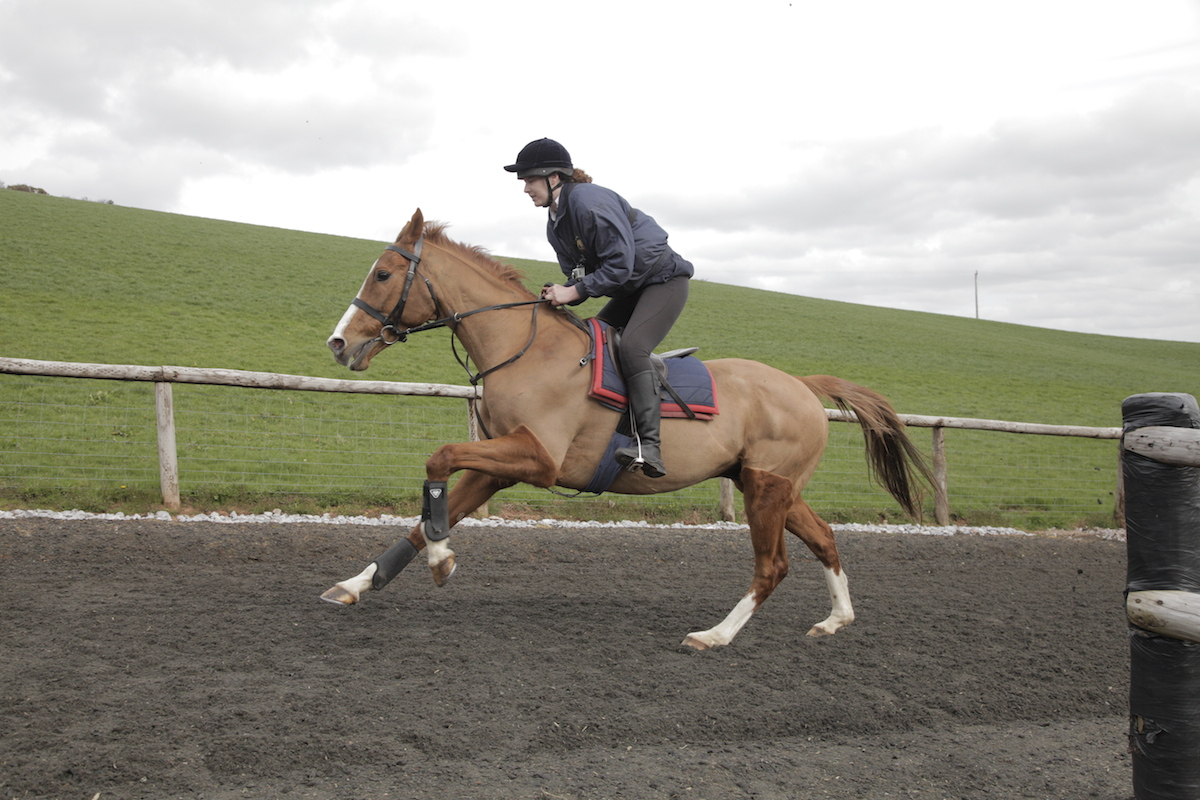
You only became acquainted with racetracks when you went to the Boxing Day races in 2012. Apparently, you did not know much about horses and racing before. What was it about the people and atmosphere that got you excited?
It was the twin thing of seeing how beautiful the horses and also the environment. It was a freezing cold day, the recession had kicked in not long before. But then you hear the announcements from the loud speaker about the arrival of horse as if a celebrity has arrived and realize all this money is being placed on horse. Then I found out about the growing popularity of syndicates coming into racing that were not part of racing elite and I came upon this story. I called Judith, who is a proper journalist and a good cold caller, and she rang Howard. He said, “Look, I’m driving and I can’t speak.” An hour and a half later, they were still talking. We went down and met the others. I had never worked on a film where the four central characters are immediately there in front of you.
Jan Vokes is a unique lady who could inspire a movie all on her own. I like how she slyly tilts her head when she speaks to the camera. It is like she is getting away with something and is proud of it. The fact that it was set in Wales in this working class environment—did that pretty much guarantee colorful characters? They all are these great raconteurs with a self-deprecating humor and a wonderful camaraderie with each other. You really couldn’t ask for a better cast.
It’s all about determination and guts. They worked well as a team. Jan and Brian had previously bred champion whippets. Brian would choose the puppy by feeling its bone structure. She looked at pedigree line. What is amazing about Jan, anyone else would look forward and think, “You won’t believe in me” and be crushed. But she doesn’t have that stage. It’s a great gift. She is unstoppable. When we went to Louisville together to Churchill Downs, all these million dollar horses went by and she said, “You know, it might be fun breed contender for Triple Crown.” By now, she just might be able to do it.
One of the constants on-screen during “Dark Horse” is Brian’s missing row of front teeth, the result of his time as a bouncer. Did you ever think to ask if he could wear fake ones?
I couldn’t think anything worse than asking him to do that. Our director of photographer was talking to Brian about how to do an interview and he said, “Let me show you my teeth.” They were green from the algae floating in the water. He had not had them in since his son’s wedding. Jan was appalled. It’s become his trademark. He tried sushi for the first time when we were in New York. He said, “This is great. I only have four teeth left, so sushi is fantastic.”
One of the greatest challenges for you was that Dream Alliance’s career wasn’t very well documented with visual aids. Basically, there were a few home movies, photos and newspaper articles and the footage of key races on TV. So you had to do re-creations of important moments. It is interesting you used the villagers from Cefn Fforest instead of extras to play younger versions of the syndicate members. And you had Tony Kerby, a former miner and Brian’s longtime friend, actually repeat the act of twirling his shirt over his head and being bare-chested while watching the Welsh Grand National race on TV in a bar.
Jan had filmed it all on her movie camera. But then she lent it to son for his honeymoon and he recorded over much of it. The tape would show the happy couple, then there would be white noise. There wasn’t much of the race so we had to fill in the rest. It kept me up most the night. My editor is fantastic. We tried to pare back the dramatizations and keep them delicate. As for having Tony to repeat that moment, that was not hard. That is who Tony is. We shot it at the working man’s club and showed each race on the TV in succession while catching the reactions. Tony said he needed a pint when the first one was shown and by the time the World National came around, he was pretty well oiled.

Your biggest celebrity, Dream Alliance himself, proved to be a charismatic star. He is 15 now. How did you two get along? Do you think that the confidence he displayed while racing—that he overcame his limitations and exceeded them—was partly because he had this group of people who loved him and fawned over him like he was a pet more than a source of income. It sounded as if Jan used him as a kind of therapy animal.
When he is on-screen, there is no one else in the frame. Those eyes. He is a very beautiful horse and he is very well aware of it. He has that matinee idol thing. Most horses will not come up to the camera. They hate black shade. It freaks them out. But he loves the attention. He is the Gregory Peck of the horse world. Most regular race horses have a more formal upbringing. But when Dream Alliance was little, he followed Brian around. He probably thought Brian was his dad.
Did you look to other horse movies for inspiration?
I watched them all, although my true favorite is “The Black Stallion.” I focused on trying to portray the relationship between a horse and person and that was the one I always adored. It really captures the personality of the horse and the relationship between the boy and the horse on the beach.
Was there a premiere of the film in Wales?
Yes, in a little town called Blackwood. They had just renovated the cinema and the people there would go to it again and again. It is gone now but it had a good run.
There is talk they might make a feature film out of this story.
A feature is definitely in the cards at the moment and it is exciting to guess what actors would be cast. For Brian, it would have to be Jim Broadbent. Brian is very concerned that they put in the contract that whoever plays him must have only four teeth. But they could do it with CGI. And Jan would have to be Julie Walters.
